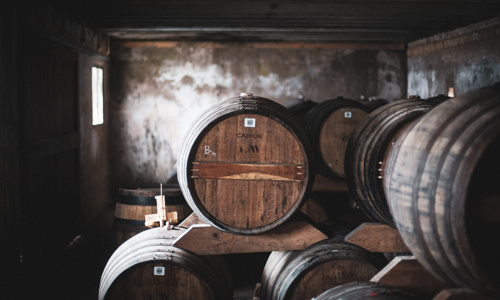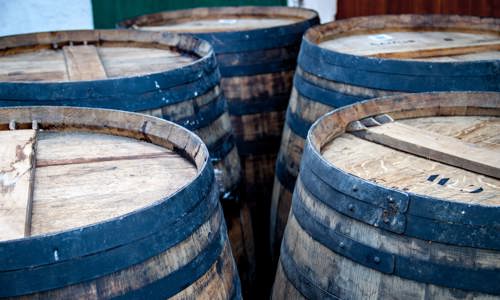What’s the difference between Scotch and Irish whisk(e)y?
When people ask the question ‘what’s the difference between Scotch and Irish Whiskey’ all too often you hear these answers.
- Scotch Whisky is peated and Irish Whiskey is unpeated
- Scotch Whisky is double distilled, and Irish is triple distilled
- Scotch Whisky is aged for three years and Irish Whiskey is aged for three years and a day
If you have heard any of these before you could be forgiven for repeating them, but the fact is they are not true, not exactly.
Let’s dispel some of these myths and learn the difference along the way. Even the spelling of whisk(e)y is a hint to its origin.
In most cases Scottish whisky is spelt without an “e” and American and Irish whiskey is with an “e”, but this is also changing as more producers from different countries enter the fold, so we cannot give you full black and white options here!
Peating your whisky occurs during the malting process when kilning your barley when peat is added to the kiln the smoke produced is absorbed by the barley. Whisky produced using this peated barley has natural smoky tones behind it, though not all Scotch is peated. Far from it. While big beasty drams from the likes of Islay are (mostly) produced with peat, it is not as prevalent in other regions. Some distilleries will use peat in the production of their whisky, though it is often at incredibly small amounts. In a similar fashion Irish Whiskey has a few peated examples, Connemara and Lockes are both peated, and Midleton recently released Irelands oldest whiskey which was curiously peated.
At one point in time yes, most Scotch Whisky would have been peated, as would have been most Irish Whiskey. In Scotland, this was before the advent of the Highland Railway in the middle of the 19th century. At this point in time coal was a difficult product to source and as such peat would have been used for almost everything regarding heat within a distillery. While Scotland’s more famous distilleries lie outside of the city centres, Irelands’ was in the reverse, with the distilleries of Dublin known for there massive capacities. While the outlying distilleries would use peat as a fuel source, once in the city those peat bogs would become difficult to get to, and the distilleries instead used coal. Historically peat was used within whisky and whiskey production, it was simply circumstance and marketing that creates the idea that Scotch Whisky is peated and Irish Whiskey is not.
So, then we move onto distillation itself. The Irish Technical File recognises the following styles of whiskey: Pot Still Whiskey, Malt Irish Whiskey, Irish Grain Whiskey and Blended Irish Whiskey. The regulations surrounding Scotch recognise the terms Single Malt Scotch Whisky, Single Grain Scotch Whisky, Blended Malt Scotch Whisky, Blended Grain Scotch Whisky and Blended Scotch Whisky.
The term singular, whenever applied to a style of whiskey or whisky, gives the clarification that that spirit has been distilled at a singular distillery. The term malt in both categories means the spirit is distilled using only the grain of malted barley with a distillation through pot stills.
Grain refers in Irish Whiskey as produced from malted barley (not exceeding 30%) and includes while unmalted cereals such as maize, wheat or barley, while in Scotch Whisky refers to spirit produced from malted barley and whole grains of other malted or unmalted cereals. In both instances, grain whiskey and whisky are distilled through continuous distillation rather than batch distillation in pot stills. Curiously if you were to run a mashbill comprised of 100% malted barley through a continuous still in either country, it would be labelled as Grain Whiskey or Whisky.
Blended whisk(e)y infers that the spirit is a blend of distillates or whiskies from numerous distilleries, in the case of blended malt only malt whisky can be used in the case of blended grain only grain whisky can be used. These terms Blended Malt and Blended Grain are not recognised in Ireland, and as such has resulted in some unique labellings. Blended Whiskey or Whisky is a blending of various styles of whiskey or whisky from various distilleries within the country of origin.
It’s when we get to Single Pot Still that we see a major difference in the styles. While the terms of malt, grain, single and blend are well known, Single Pot Still is less known. It refers to whiskey distilled in Pot Stills with a mash bill comprised of at least 30% malted barley, at least 30% unmalted barley, and at most 5% other grains such as oats, rye or maize. While traditionally the spirit would be triple distilled, either a triple or double distillation can be used. This term is unique to Ireland, making such a whisky in Scotland would result in a Grain Whisky.
Historically Ireland has used Pot Stills for distillation. While the inventor of the Coffey Still (itself built on the earlier creation of the Continuous Still Process created by Scotsman Robert Stein) the Inspector General of Excise Aeneas Coffey was an Irishman, the Continuous Still was rejected by Irish Distillers.
While several small distilleries in Ireland at the time used the continuous model, the large Dublin distillers were against the process due to their view of the ‘neutral’ spirit created, questioning its provenance as Whiskey. Scotland, on the other hand, adopted the process en masse particularly after the repealing of the Corn Laws due to Ireland’s Great Famine, ensuring that cheap grains could be imported, distilled and the resulting distillate could be blended with pot still spirit to create blended whisky, a cheaper alternative.
This choice to stay with pot still distillation from a flavour perspective and wanting to stay true to what was done for years is commendable, though it ignores the fact that continuous distillation is just that, continuous. Pot distillation runs on batches, is more costly and time-consuming. The Irish Distillers deciding to stay true to their batch distillation and ignore the more efficient distillation, while also declaring that it could not be considered whiskey, was not their greatest idea.
Scotch Whisky is most commonly double distilled, yes, but there are famous exceptions such as Rosebank, Springbank and Auchentoshan that are triple distilled, and Mortlach has a ‘Wee Witchie’ process that distils 2.81 times. Irish whiskey has triple distilled through the years, but whiskies such as Pearse Lyons are double distilled. The Connemara and the previously mentioned Midleton are and were double distilled. While Scottish double distillation and Irish Triple Distillation may be the norm, it is by no means a hard and fast rule.
And ageing? The simple fact is that both Scotch and Irish Whiskey must both be aged for a minimum of three years. While it is often said that Irish Whiskey must be aged for three years and a day the regulations surrounding Irish Whiskey state a minimum of three days, as do the Scotch Whisky regulations. Both sets of regulations were formed from the Immature Spirits (Restrictions) Act of 1915. While originally the act set a minimum of two years, a year later in 1916 that was changed to three years. Where does this idea of an extra day come from? It is difficult to say, though the idea perseveres through distilleries and brands.
Wood is the major area where we see a difference between the two. Scotch Whisky Regulations states ‘that has been matured only in oak casks of a capacity not exceeding 700 litres’ though the Irish Technical File stats ‘subject to the maturation of the final distillate for at least three years in wooden casks, such as oak, not exceeding 700-litre capacity’. Those keys lines of text have a world of difference, meaning that Ireland has a much wider variety of wood styles to use. Certain distillers and bonders have taken advantage of this recently, resulting in Whiskey unlike what most have been exposed to.
So there you have it, not a simple explanation but a myriad of different approaches, but one thing is for sure whisk(e)y remains one of the most interesting spirits of our time.
Slainte to that!





